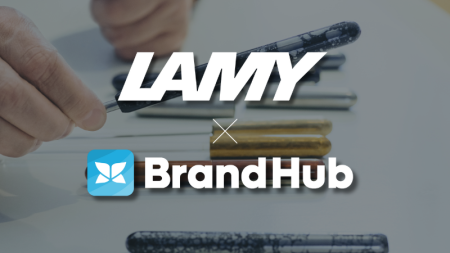Classification
The Graphics Interchange Format (GIF) is a digital image format developed by CompuServe in 1987. It is characterized by its ability to display both static images and simple animations. GIFs use a lossless compression method based on the LZW algorithm. These properties make GIFs particularly suitable for displaying graphics, logos, and simple animations on the internet. Due to their small file size and extensive support across various platforms and web browsers, GIFs have become a widespread medium in digital communication.
Technical basics of the GIF format
A key feature of the GIF format is its limitation to a color palette of a maximum of 256 colors (8-bit). This limited color depth is a constraint, especially compared to other formats like JPEG and PNG. JPEG images can display up to 16.7 million colors (24-bit), making them better suited for photographic content requiring fine gradients and detailed shading. PNG also supports a color palette of up to 16.7 million colors and offers lossless compression, making it a preferred choice for high-quality graphics and images with transparency.
GIFs offer unique features that make them indispensable in certain applications. One of the most important features is the support for animations. An animated GIF consists of a sequence of individual images played in quick succession to simulate motion. This characteristic has made GIFs a popular medium for short, repetitive animations on the web and social media.
Another feature of GIFs is the support for transparency. A GIF can define a single transparent color in its palette, making it possible to create images with non-rectangular shapes or transparent backgrounds. However, GIF only supports binary transparency (either fully transparent or fully opaque), in contrast to PNG, which offers an alpha channel for semi-transparent pixels.
The compression efficiency of GIFs is limited compared to modern formats like WebP. WebP, an image format developed by Google, offers both lossless and lossy compression and also supports animations and transparency, but with better compression efficiency and image quality.
Applications and Uses
The GIF format has proven to be extremely versatile and is widely used in numerous applications. Especially in web design and on social media platforms, GIFs are ubiquitous. Their ability to display short, repetitive animations makes them ideal for making websites and posts more visually appealing and capturing users' attention. GIFs not only enhance aesthetics but also contribute to user-friendliness by conveying complex content in a simple and entertaining way.
In digital communication, GIFs have taken on an important role. They enable users to share emotions and reactions in a way that is difficult to achieve with text-only messages. GIFs offer a quick and effective way to express moods and feelings, which is particularly appreciated in messaging apps and social networks. They help make conversations more lively and personal. GIFs are also frequently used in the creative industry and art scene. Artists and designers appreciate the possibilities that the GIF format offers to integrate movement and dynamism into their works. GIFs allow creative ideas to be presented in an easily accessible and widely used form. This creative application has contributed to the popularity of the format in areas such as digital art and animation.
A comparison with other animation formats such as APNG and WebP shows that each format has its own strengths and weaknesses. While APNG and WebP may be superior in certain technical aspects, the GIF format remains a preferred medium due to its simplicity and broad support on the internet. GIFs offer a balance between compatibility, file size, and functionality, making them attractive for many applications.
Current Trends and Future Developments
The GIF format has continuously evolved over the years, and current trends and future developments indicate that it will continue to play an important role. Technological innovations have significantly simplified the creation and use of GIFs. New software tools enable the creation and editing of high-quality GIFs with minimal effort. These advances contribute to the increasing use of GIFs not only in social media and everyday communication but also in professional fields. The relevance of GIFs in modern digital communication remains intact. They are an integral part of messaging apps and social networks, where they help convey emotions and messages in an immediate and visually appealing way. The short, repetitive nature of GIFs makes them ideal for quick and effective communication in an increasingly visual-oriented world. GIFs have a significant impact on pop culture and digital media. They are an integral part of memes, viral content, and cultural references. Their widespread use in social media and online communities has established them as a universal language that transcends linguistic and cultural barriers. The future applications of GIFs are diverse and exciting. With the emergence of new technologies such as Virtual Reality (VR) and Augmented Reality (AR), new ways of integrating GIFs into immersive and interactive environments are opening up. Additionally, improved compression techniques and higher color depths could further enhance the quality of GIFs and expand their application possibilities.
Digital Asset Management (DAM) and GIFs
In the context of Digital Asset Management (DAM), GIFs play a central role as visual assets frequently used for marketing, social media, and digital communication. DAM systems enable efficient management of these GIFs through features such as metadata tagging, versioning, and access control. They provide companies with the ability to centrally store, quickly reuse, and ensure consistent use of GIFs across various channels. This centralized management contributes to improved efficiency in content creation and supports consistent brand identity through easy search, organization, and distribution of GIFs within the organization. An overview of all types of digital assets can be found here.
Conclusion
A significant medium in digital communication
In summary, despite its technical limitations, the GIF format remains a significant medium in digital communication. Its ability to support animations and transparency has made it indispensable in numerous applications. With advancing technology and the growing popularity of visual content, GIFs will continue to play a central role in the digital media landscape.




